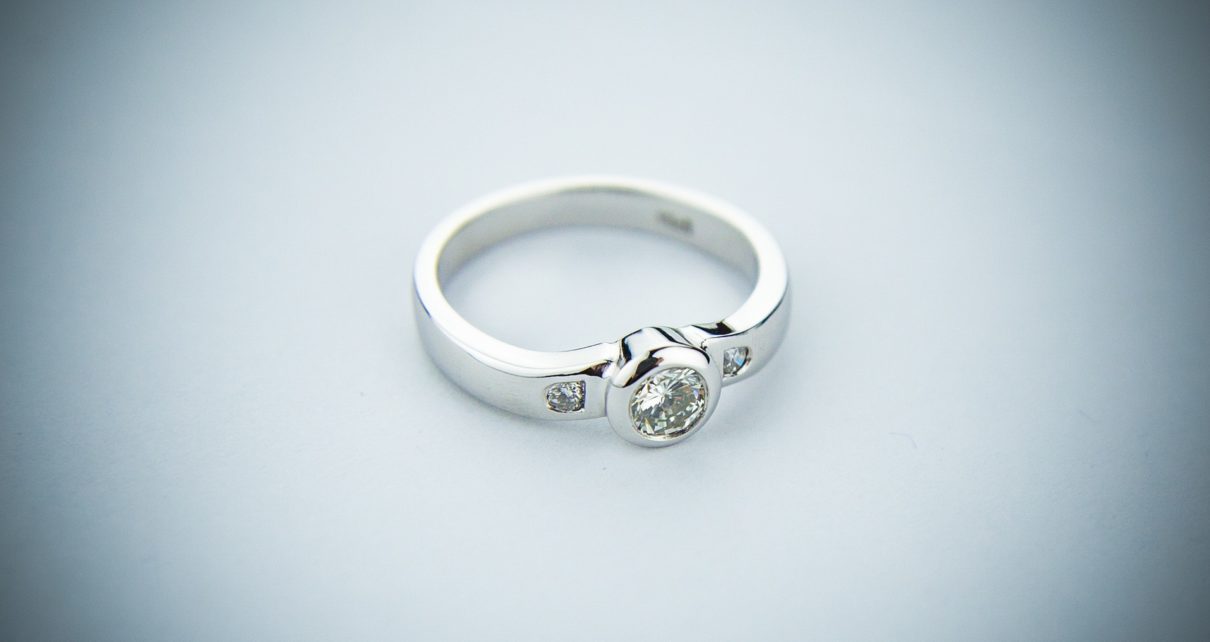Find out why shade “G” is sufficient and other ways to get the most beautiful diamond ring in your budget – or even less.
Size does not matter.
It is a common misconception that the price of a diamond depends only on its size. The color and the purity of the diamond are also decisive for its price. In general, four characteristics, the so-called 4C, determine the quality and thus the value of a diamond:
- Color: The value of the diamond strongly depends on the color classification. The more transparent the stone, the more valuable it is. The definition of “transparency” is divided into levels by the Gemological Institute of America (GIA). Starting with D, for the colorless classification up to yellowish or brownish color, the scale defines each color value. Class G to H diamonds offer the best price-performance ratio. Tiny shades of color can only be recognized by a specialist in direct comparison with a colorless diamond. Our diamonds correspond to the GH scale.
- Cut: Thanks to the cut, a shapeless natural stone takes on its fabulous shape. With diamonds, it is particularly important to achieve a precise and clean cut. It is only through an excellent cut that the brilliance and multifaceted nature of the diamond also called “fire”, are brought to light. 1卡鑽石, here you can check different cuts of diamonds.
There are a variety of cuts: princess, brilliant, oval, navette, drops. The best known is brilliant-cut with 57 facets.
- Clarity: The purity of a diamond defines the number of foreign objects enclosed, which can be found in almost every gem. A perfectly pure diamond, also called “flawless”, is extremely rare and expensive. One speaks of flawless diamonds when a specialist cannot see any foreign objects or scratches at a magnification of ten times. Nevertheless, the rule applies, the fewer inclusions, the higher the diamond quality and the price. In order to find an ideal price-performance ratio here, too, it is important to know that tiny inclusions of classes VVS1 to SI2 cannot be seen with the naked eye.
- Carat (weight): The size of the diamond is measured by its weight. One carat corresponds to approximately 0.2 grams. The classic engagement ring shines with a quarter carat, half a carat, or one carat. The unit of measure carat should not be confused with the unit of the same name for measuring the fineness of gold.
Purity “Si1” is sufficient
The purity scale measures how few so-called inclusions are inside the diamond.
The same applies here: up to the purity level “Si1” (for “slightly included one”), the small flaws can only be seen with the naked eye with a magnifying glass. To know more about diamonds and its grading visit 鑽石級數.
Only with larger diamonds from 1 carat, you should make sure that your stone corresponds to the purity level “VS2”.
PROFESSIONAL TIP:
Even if a diamond has major flaws, it may be hidden by the prongs, the small prongs of the ring setting that hold the diamond. Take a look at the GIA certificate (by clicking on the button in the diamond selection): For larger diamonds, a graphic shows where the inclusions are located.



